African Coffee Uganda Coffee production area Uganda Coffee treatment & hand-made Ugandan coffee flavor
Professional coffee knowledge exchange more coffee bean information please follow the coffee workshop (Wechat official account cafe_style)
Ugandan coffee is almost unheard of in the boutique coffee industry. The country has always grown Robusta. In recent years, as coffee production has boomed, Uganda has also begun to grow Arabica coffee beans. The local government has also established new laws to regulate coffee cultivation to help Ugandan coffee improve the quality of its main export.
Country profile
Uganda is located at the source of the Nile, a landlocked country off the sea in Africa, with fertile land, volcanic soil in both East and West, abundant rainfall, and two bumper harvests in some areas: April to June and October to February. Qianjie believes that Ugandan coffee has black plum, ripe fruit, full juice and full-bodied and solid taste.
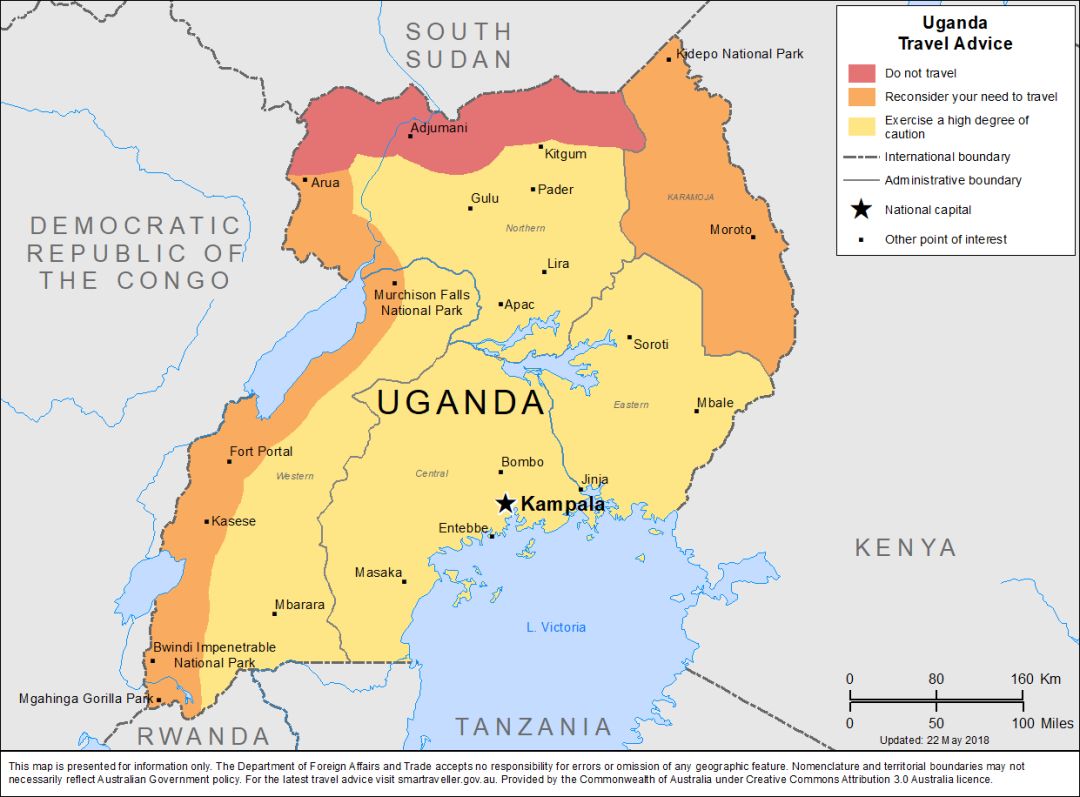
Although it has a long history of producing coffee like other East African countries, the quality of coffee has never been improved because of the war caused by ethnic antagonism. Most of the good coffee here is grown in areas adjacent to Kenya, and some good coffee beans are shipped to Kenya to be sold as Kenyan coffee.
Uganda is an excellent place to grow coffee, and armed conflict has damaged the industry over the past few decades, especially in the West Nile producing areas in the 1990s, which leapt into a fast-growing country only when the war stopped 15 years ago.
Uganda improves coffee quality through coffee planting
According to the Financial Network, under the new law, all coffee growers will register and receive identification numbers showing their land area, number of trees, coffee buyers, sellers and nursery operators starting from 2020. The new law is now awaiting approval from the president of the country.
The legislation "aims to reform the law to provide that the Uganda Coffee Development Authority can regulate, promote and supervise the coffee industry and regulate all farm and non-farm activities in the coffee value chain." The council said it would also help farmers establish contacts with buyers, build irrigation systems, and provide planting materials and extension services.
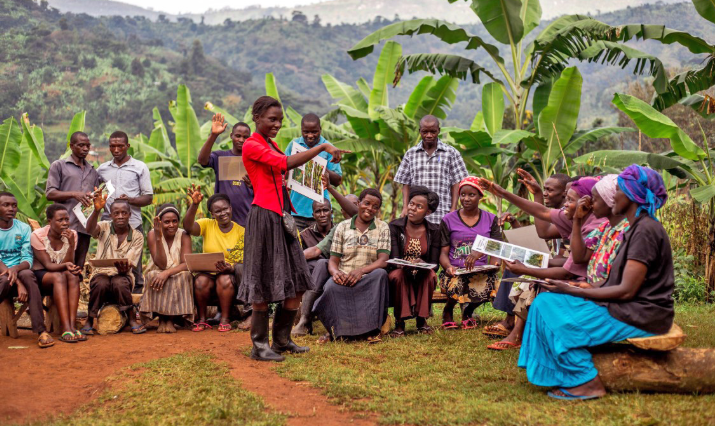
Coffee producing area
Uganda has long been known for its robusta coffee, a native species that is still wild in the country's rainforest. However, you will also find Arabica coffee growing in three areas: Mount Elgon in the east, the Renzori Mountains in the southwest and the West Nile in the northwest. Each producing area is unique and has different coffee characteristics and production methods.
Elgon, Mt.
Located on the country's eastern border with Kenya, it is actually the oldest volcano in East Africa. Coffee farms perch on both sides, are covered with forests and get important water from steep ditches. At lower altitudes, the harvest season is from June to December; at higher altitudes, it does not begin until July and will last until February.
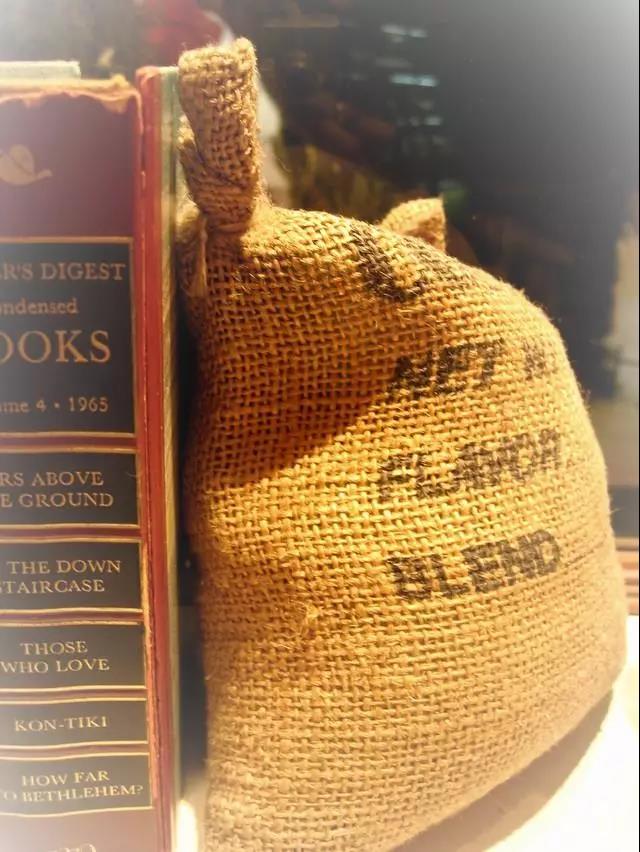
West Nile River
The West Nile region is located in northwestern Uganda with between 1300 and 1600 farms. Indigenous trees such as banyan trees are used as shade for generations of farms. Coffee from the region is usually cleaned and is famous for its citrus aroma.
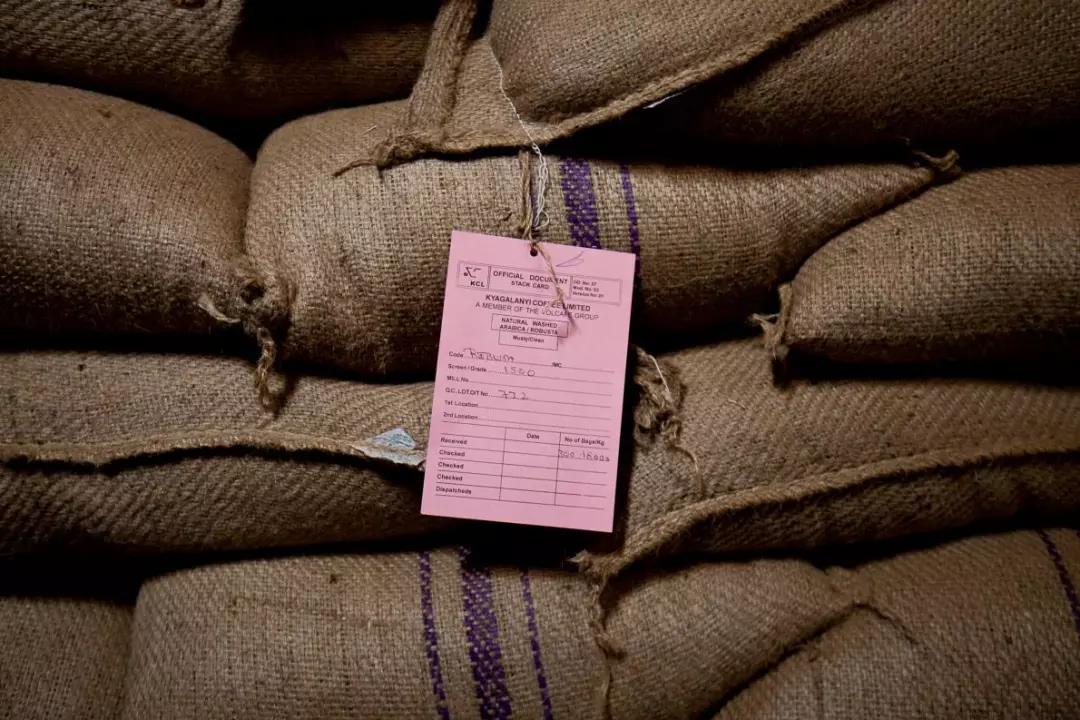
Renzori Mountains
The mountain range, commonly known as Moon Mountain, is located on the southwestern border between Uganda and the Democratic Republic of the Congo. Coffee grows on hillsides between 1500 and 2300 Masra above sea level. The nitrogen-rich soil in the volcano creates a very suitable soil for coffee. Natural processing is the most common here, although you can also find a method of washing.
Coffee grading
The coffee grade in Uganda is the same as in Kenya, with the AA grade being the best, which represents a uniform and uniform size of coffee beans.
AA Plus (AA+): AA grade with excellent quality (flavor, taste) in the cup
AA: particle size (Screen Size) 17 Murray 18 mesh size
AB: particle size (Screen Size) 15 Murray 16 mesh size, accounting for the majority of production
C: those whose particle size (Screen Size) is smaller than AB
TT blows lighter beans from AA and AB beans with an airflow filter.
T from C-grade beans, lighter beans blown by an airflow filter.
UG: those who do not meet the above criteria
E Elephant Bean: a large mutant bean with two beans in one, also known as Elephant ear
PB Peaberry is classified by appearance and has nothing to do with flavor weight.
Coffee variety
The main Arabica varieties grown in Uganda are Bourbon, Kent, SL14 and SL28.
Bourbon: a variety of early (prehistoric coffee) iron pickups that changed from a thin tip to a round shape after being transplanted to Yemen. It was named bourbon in 1715 after France transplanted round beans from Yemeni mocha to the island of Bourbon on the east coast of Africa (renamed Reunion after the French Revolution). Bourbon beans spread to Brazil and Central and South America in 1727, and the British transplanted Yemeni mochas to St. Helena Island (where Napoleon was later imprisoned) in 1732.
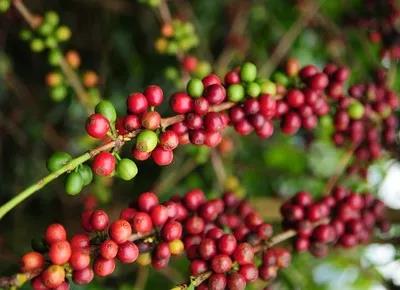
Kent, a hybrid of S288 and iron pickup, was discovered in 1911 at the Kent Cafe Garden in Mysso, India. It has high yield and rust resistance. The aroma of coffee is thicker than that of bourbon, and it has been introduced to new world producing countries such as Kenya and Indonesia.
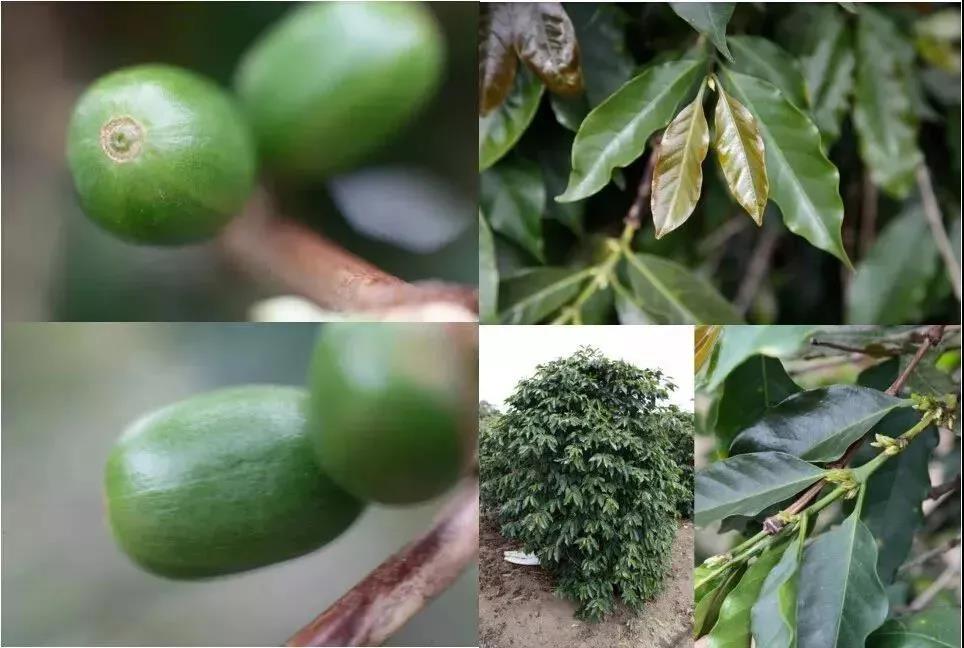
The varieties of SL14 and SL28:SL come from the research and selection of Scott Lab. Kenyan coffee is world-famous for SL28 and SL34, so the Ugandan government vigorously promotes and distributes SL seeds to farmers. Among them, SL14 not only has good flavor and drought resistance, but also can be harvested after planting for two years, which meets the needs of farmers.
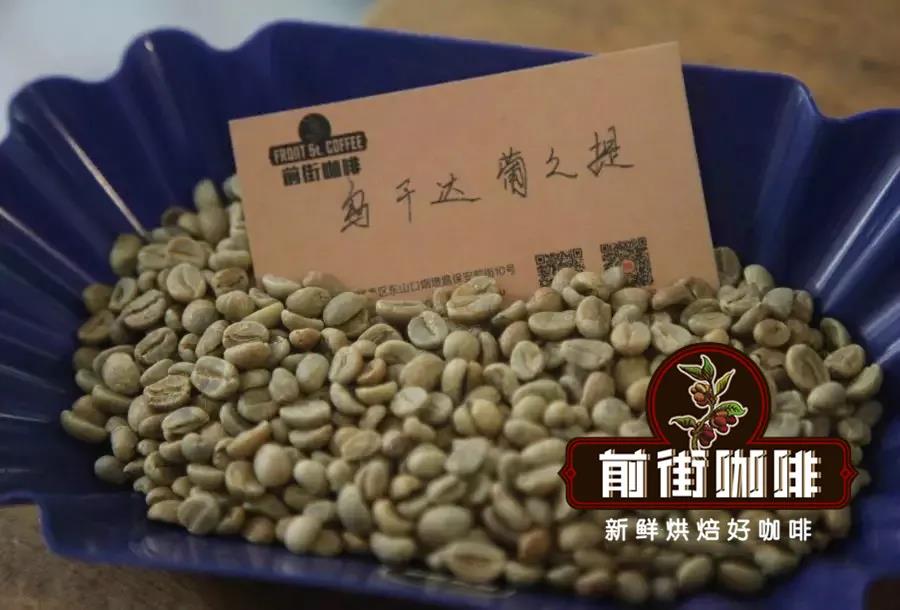
Coffee bean treatment
The Arabica coffee in Uganda has typical African characteristics and has an obvious sense of fruit juice, while the coffee beans in the western region are relatively mellow, and the ones processed by the sun method are commonly known as "sun beads" and the ones processed by water washing are called "wash Wuge". However, Uganda is mainly water washing, there will also be micro-batch sun treatment.
Washing treatment method
Coffee farmers first pour the picked coffee berries into a large tank, the immature inferior beans will surface, and the ripe and full fruits will sink to the bottom of the water, and the defective beans (fruits) floating on the surface will be removed. Then use the pulp sieving machine to remove the outer skin and pulp of the coffee fruit, when the coffee beans are still attached to a layer of slippery pectin. Put the coffee beans with pectin in the fermentation tank for 16 hours and 36 hours, during which the microbes will decompose the pectin. After the fermentation is completed, a large amount of water is used to remove the pectin residue from the coffee beans. Finally, the washed coffee beans are dried in the sun. The water washing method has both soft and strong acidity, suitable mellow, sweet and spicy.
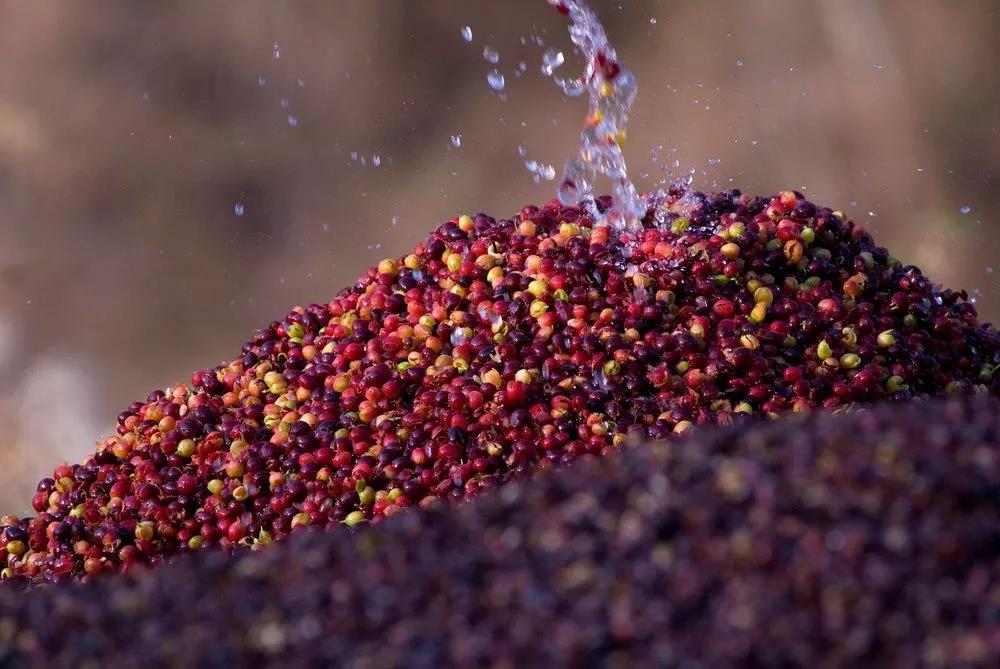
Sun treatment
After picking the coffee fruit, screen out the defective fruit and the unripe / overripe fruit. It is then sent directly to the high scaffolding to dry, and sun-processed coffee like this is dried between 25 and 30 days. The drying process was not completed until the moisture content of coffee was reduced to about 11%. The coffee treated in this way has high sweetness and rich layers.
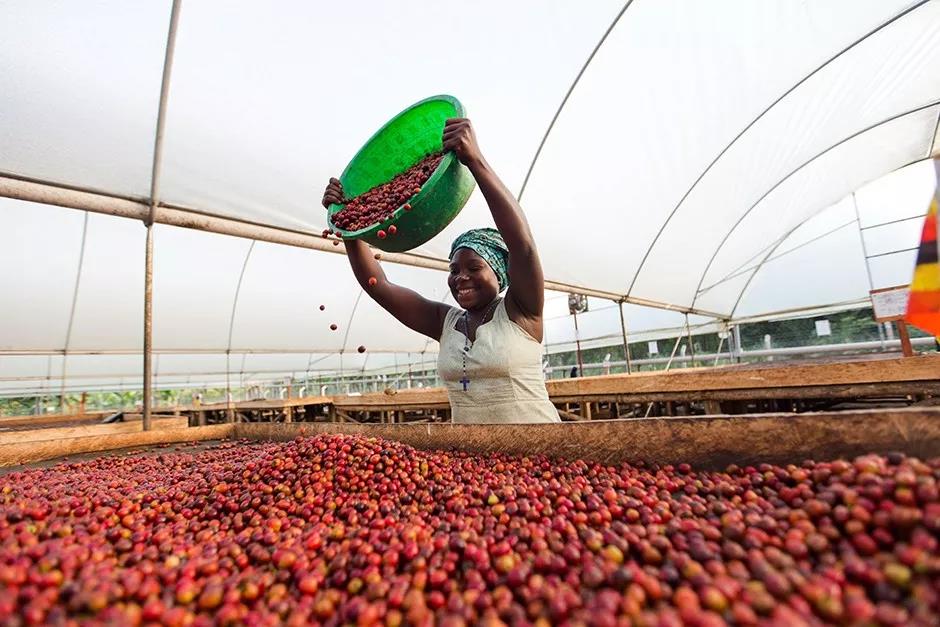
The front street started with a coffee bean from Mount Elgon, Uganda, and then took a look at how the front street roasted Ugandan coffee beans.
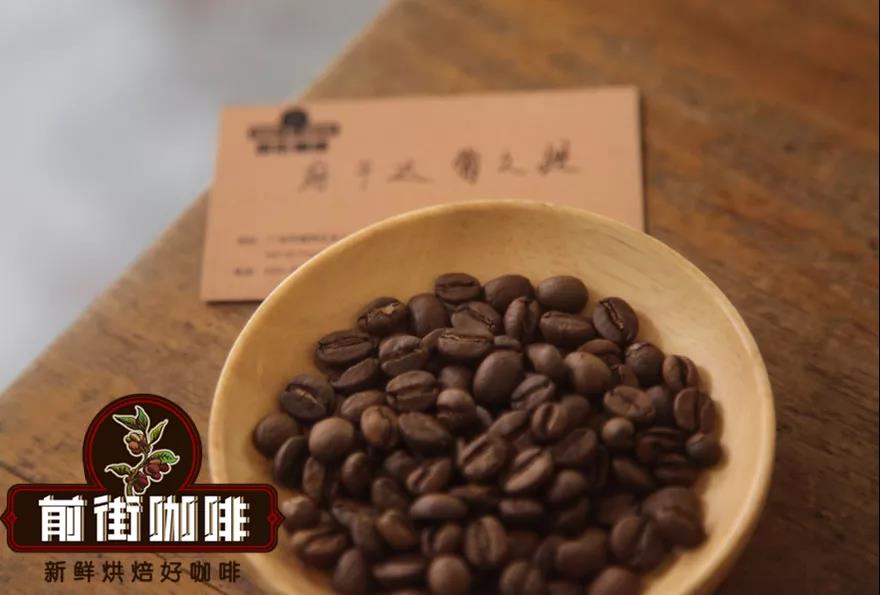
Anaerobic fermentation solarization of Puzhitian in Uganda
Producing area: Mount Elgon, Uganda
Altitude: 1600-1850 m
Treatment method: anaerobic fermentation and solarization
Variety: SL14&SL28
The treatment of this bean is anaerobic fermentation and solarization, in which the whole coffee berry is first anaerobic fermented and then sun-treated. Basically, the anaerobic process makes coffee more uniform and easier to monitor, while the aerobic process is more complex and harder to monitor. In an anaerobic environment, the decomposition rate of pectin sugar is slowed down, and the ph value decreases more slowly, prolonging the fermentation time, thus developing a better sweetness and a more balanced flavor. The temperature controlled by anaerobic fermentation must be lower than 10-15 degrees Celsius. Coffee beans should be fermented for three days without oxygen in a closed and clean stainless steel fermentation container. And put it on the scaffolding for sun treatment.
Qianjie baking suggestion
The furnace temperature is 160℃ and the firepower is 100. the throttle is opened at 390 ℃, and the throttle is opened to 4 at 140℃, the firepower remains unchanged; when the furnace temperature is 146.1 ℃, the bean meter turns yellow, the grass smell disappears completely, and enters the dehydration stage. When the furnace temperature reaches 166℃, the firepower is adjusted to 80 ℃, and the throttle remains unchanged. The smell of toasted bread has obviously changed to the smell of coffee, which can be defined as a prelude to an explosion. At this time, it is necessary to listen carefully to the sound of the explosion point, when the sound of the explosion point starts to explode, and the throttle opens to 5. After the explosion, the development of the ℃ after the explosion begins.
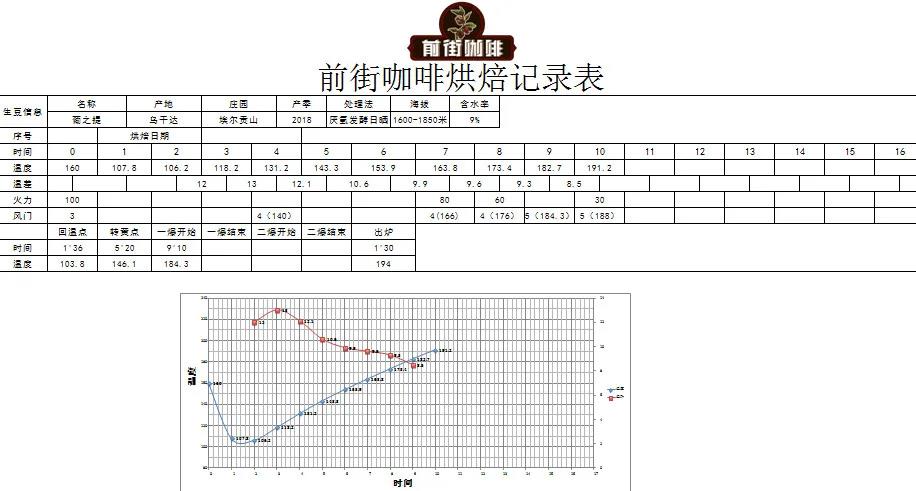
Qianjie Cup test report
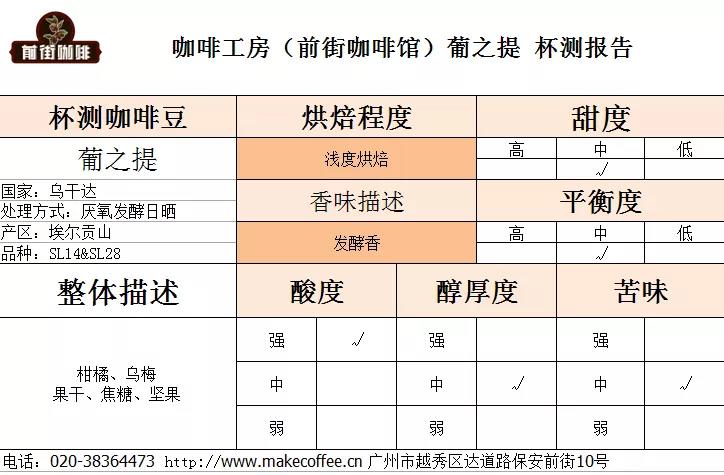
The suggestion of cooking in Qianjie
Filter cup: V600001
Water temperature: 90-91 ℃
Powder content: 15g
Powder / water ratio: 1:15
Degree of grinding: medium and fine grinding (Chinese standard No. 20 screen pass rate 80%)

Qianjie cooking technique: three-stage extraction. Steam with 30 grams of water for 30 seconds, small water flow around the circle to 125 grams for sectional injection, water level drop is about to expose the powder bed, continue to inject water to 225 grams to stop water injection, and so on when the water level drop is about to expose the powder bed, remove the filter cup, (steaming starts timing) the extraction time is 1 minute 39 percent 50 ".
Flavor: it smells fermented and slightly sour, with sour notes of grapes, citrus, lime and berries on the palate, creamy in the middle, sweet caramel and cocoa in the end, with a sense of juice. This bean tastes full-bodied and solid when the temperature is high, and it tastes sour and sweet when the temperature drops.
For more boutique coffee beans, please add private Qianjie coffee on Wechat. WeChat account: kaixinguoguo0925
Important Notice :
前街咖啡 FrontStreet Coffee has moved to new addredd:
FrontStreet Coffee Address: 315,Donghua East Road,GuangZhou
Tel:020 38364473
- Prev
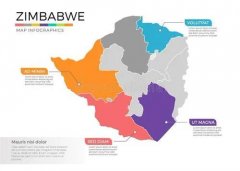
Flavor characteristics of Zimbabwe Coffee beans in African Zimbabwe Coffee producing area & Zimbabwe Coffee beans
For more information on coffee beans, please follow the coffee workshop (Wechat official account cafe_style). Coffee from Zimbabwe is seldom heard these days. Zimbabwe used to be the same as Brazil, Kenya, Ethiopia and other big producers. Since 2000, due to political unrest and other reasons, Zimbabwe's coffee industry has fallen off a cliff, even though Zimbabwe
- Next

Suggestion on brewing wind-stained coffee in Asian coffee-growing countries in India & the production of wind-stained coffee
Professional coffee knowledge exchange more coffee bean information Please follow the coffee workshop (Wechat official account cafe_style) when it comes to the ancient coffee varieties, the native varieties of Ethiopia and the mocha of Yemen are well deserved. In fact, India also began to grow coffee in the 16th and 17th centuries, which can be regarded as the third oldest coffee variety, but because there were many coffee genes in India at that time.
Related
- Beginners will see the "Coffee pull flower" guide!
- What is the difference between ice blog purified milk and ordinary milk coffee?
- Why is the Philippines the largest producer of crops in Liberia?
- For coffee extraction, should the fine powder be retained?
- How does extracted espresso fill pressed powder? How much strength does it take to press the powder?
- How to make jasmine cold extract coffee? Is the jasmine + latte good?
- Will this little toy really make the coffee taste better? How does Lily Drip affect coffee extraction?
- Will the action of slapping the filter cup also affect coffee extraction?
- What's the difference between powder-to-water ratio and powder-to-liquid ratio?
- What is the Ethiopian local species? What does it have to do with Heirloom native species?

